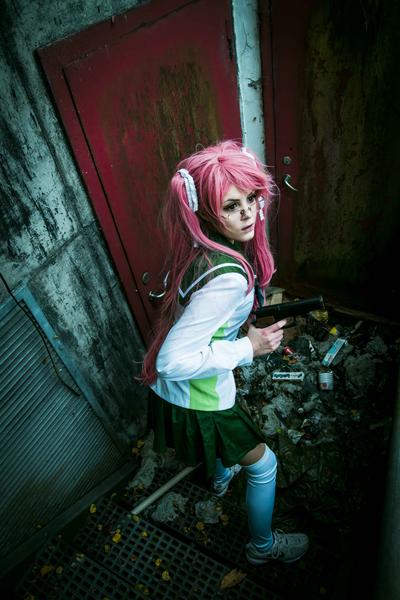Cosplay lexicon
Cosplay [costume play]: In 1984 a Japanese filmmaker saw fans at an American sci-fi convention dressed as sci-fi characters and called it スプレ – kosupure, a word that can also be used for the cosplay costume.
Manga [漫画]: The Japanese term for comic book. Sometimes used more broadly to describe Japanese pop culture.
Anime [アニメ]: The Japanese term for animation and used globally to describe animation from Japan.
Dojinshi [同人誌]: Self-published materials, e.g. fan manga based on manga, anime and video games.
Crossplay [cross-dressing cosplay]: A cosplayer with a character of the opposite gender or that plays with gender.
Fan art: Artwork, e.g. an illustration, made by fans whose sources of inspiration include manga, anime and video games.
Fan fiction: Poems, short stories, novels, etc. created by fans based on an original work like Harry Potter or Naruto.
Con [convention]: A large fair where fans share their interest in, for example, Japanese popular culture.
Photoshoot: A term from the world of fashion/advertising when a photographer takes a series of photos of one or more cosplayers.
Purikura [プリクラ/print club]: A photo booth producing stickers, which emerged in Japan in the mid 1990s.
Styrofoam mannequin head: Used by cosplayers to style and store wigs.
Worbla: Thermoplastic used by cosplayers to make costume details.
Coscard [cosplay name card]: Artist/business card used by cosplayers to network at conventions, etc.
Cosplay essentials: Used to describe everything cosplayers need for their costumes and performances.
Hetalia [ヘタリア]: Originally the Japanese web manga of Hidekaz Himaruya. Hotaru’s cosplay.
BlazBlue [ブレイブルー ]: Japanese arcade fighting game from Arc System Works. Kurowko’s favourite video game and cosplay.
Fate [フェイト]: Started as a visual novel about the Holy Grail War developed by Type Moon. Toshi’s cosplay.
Princess Tutu [プリンセスチュチュ]: Ballet-themed anime from Hal Film Maker Studio. Julie and Camilla’s cosplay.
Rantaro the Ninja Boy [忍たま乱太郎]: Manga-based ninja anime from NHK. Hotaru’s cosplay.
Saint Seiya [聖闘士星矢]: Originally a manga for boys about warriors protecting Athene. Hotaru’s cosplay.
The Legend of Zelda [ゼルダの伝説]: Adventure/fantasy game series from Nintendo. Nikoline’s cosplay.
Yaoi [やおい]: Manga, anime, etc. that depict romance, love and sex between male characters.
Yuri [百合]: Manga, anime, etc. that depict romance, love and sex between female characters.
Visual novel [ビジュアルノベル]: Interactive game with a stronger focus on visual narrative than player activity.
Toshi [川平利光 /Toshimitsu Kawahira]: Short version of Toshimitsu. Toshi does not use a cosplay name.
Hotaru [蛍]: Directly translated means firefly. Hotaru only appears in the exhibition under her cosplay name.
Kurowko [クロコ]: Directly translated means black child. Kurowko only appears in the exhibition under her cosplay name.
Himo: Camilla’s cosplay name, which means hustler. She was given the name as a joke, but it just stuck.
Kelevar: Julie’s cosplay name from the bad dog Kelevra in the film Lucky Number Slevin.
Enilokin: Nikoline’s cosplay name - Nikoline spelt backwards.

